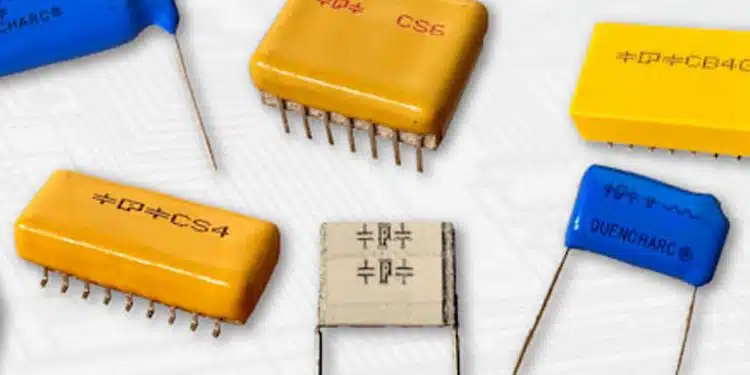Quantic™ Paktron, a Quantic® Electronics company, and 70-year innovator in polymer film capacitors, announced the CC Capstick® and RC Angstor®, two revolutionary hi-reliability multi-layer polymer (MLP) capacitors that provide the industry’s highest ripple current rating per C*V.
These new capacitors are ideally suited for power supply applications, including bi-directional power conversion, high frequency AC, DC link, DC block, filtering, and snubbing.
Using a new and recently commercialized dielectric film, together with its proprietary interleaf technology, Quantic Paktron designed the CC Capstick and RC Angstor incorporating multilayer polymer (MLP) construction for faster frequency response and lower losses. Both SMD Lead frame and radial thru-hole packaging are available in the CC Capstick and RC Angstor, respectively. Both series provide the following characteristics:
- -55 to +150C operating temperature range
- High density and lightweight; <25% of equivalent MLCC
- High dV/dt, SRF exceeds 2.5MHz
- Ultra-low ESR, ESL, DF
- Rugged construction, self-healing properties
- Capacitance range up to 50uF
- Working voltage range from 50-500 VDC
“Leading edge power supply designs utilize faster switching frequencies to meet ever increasing size, weight, and electrical efficiency constraints,” said Zachary Kilsmith, Director of Business Development and Engineering, Quantic Paktron. “Sourcing buck/boost capacitors that can withstand the increased AC currents and frequency response requirements, while still meeting overall size weight and cost constraints, can challenge power design engineers. Our new CC Capstick and RC Angstor capacitors solve this challenge.”
Quantic Paktron has utilized its patented interleaf technology in high reliability power electronics platforms since its introduction in the mid-1980’s in both the Capstick and Angstor series. With the addition of the new dielectric film, the CC Capstick and RC Angstor capacitors are the latest iterations of these series.































